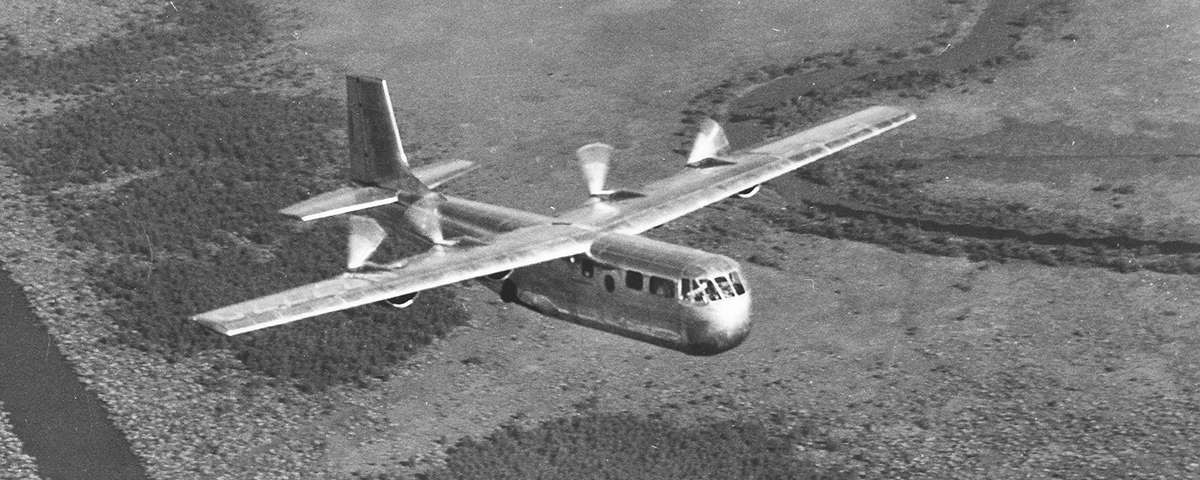Monsted-Vincent MV-1 Starflight
The all-aluminum Monsted-Vincent MV-1 Starflight was the brainchild of two World War II veterans, U.S. Army Air Force Colonel Robert M. Monsted and former Army liaison officer Colonel H. Farley Vincent. They touted it as an executive transport “to give the businessman the same dependability and flying range that airlines give their passengers.” Former Lockheed engineer Art Turner aided them in realizing their dream.
Built at the Michaud plant in eastern New Orleans, the transport mounted four 85-hp Continental C-85 engines (later upgraded to Continental O-200s) driving two-bladed Sensenich propellers. The MV-1 could carry a pilot and three to five passengers for up to eight hours, or 1,200 miles, on 172 gallons of fuel. It was capable of flying on two engines—even two on one wing—if necessary.
Wingspan was 48 feet 5 inches, length 31 feet 6 inches; empty weight was 3,200 pounds and loaded weight 5,000 pounds. Maximum speed was 160 mph, cruise 150 mph, stall speed 57 mph and takeoff distance was 920 feet. Service ceiling was 16,000 feet.
First flying on October 1, 1948, the Starflight performed well, but it suffered a minor crash before it could be board certified. Worse, at about that time the U.S. Air Force was releasing thousands of proven Beech 18s and other multiengine aircraft to the civilian market at prices that hopelessly undercut whatever Monsted and Vincent had in mind for their still-unproven airplane.
In 1982 the Vincent family donated the sole MV-1—the only four-engine airplane built in Louisiana—to the Wedell-Williams Memorial Aviation Museum in Patterson, La. The Starflight’s run of bad luck was not yet over, however: In 1992 it was badly damaged by Hurricane Andrew. The wreckage was stored for future restoration but was still awaiting that when Hurricane Rita struck in 2005, further damaging the plane and the hangar in which it was kept. Where its remains now reside and whether or not someone might attempt to resurrect the MV-1 are mysteries in themselves.

